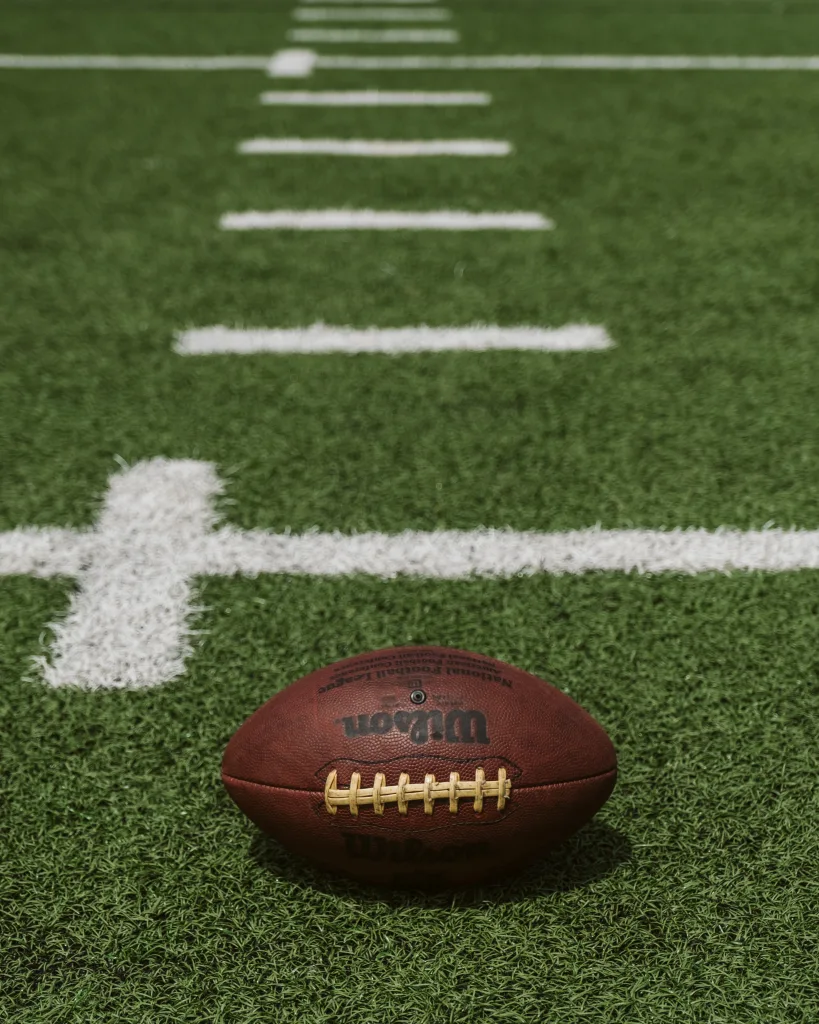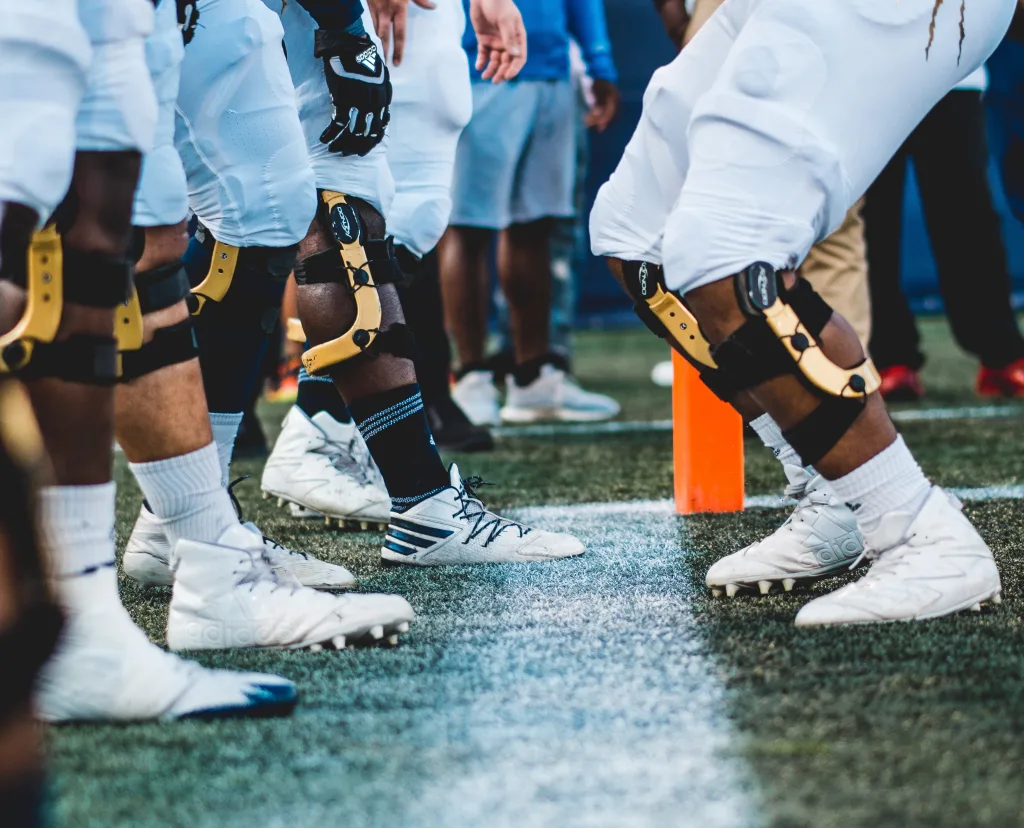The touchback rule in football, specifically pertaining to kickoffs, has undergone some changes in recent years. The decision to move the touchback spot from the 20-yard line to the 25-yard line was made with the aim of reducing the number of kickoff returns and minimizing the risk of injuries associated with high-speed collisions.
In both college and professional football, when a kickoff or a free kick after a safety results in the ball touching the ground in the opposing team’s end zone, rolling out of the back-end zone, or touching the goal post, it is considered a touchback. This ruling means that the receiving team automatically gains possession at their own 25-yard line.
So why was the decision made to move the touchback spot to the 25-yard line? The primary motivation was to incentivize teams to take touchbacks rather than attempt to return the kick. By placing the ball at the 25-yard line instead of the 20, the receiving team gains an additional 5 yards of field position. This small but significant advantage encourages teams to prioritize field position and reduce the likelihood of big returns.
The idea behind this change was to increase the frequency of touchbacks and subsequently decrease the number of high-speed collisions that occur during kickoff returns. The NFL, in particular, has been focused on player safety in recent years, and the touchback rule change was seen as a step in the right direction.
By reducing the number of kickoff returns, the league hoped to minimize the risk of traumatic injuries that often result from these high-impact plays. Kickoff returns are notorious for their potential for violent collisions, as players sprint full speed towards each other with the intention of stopping or tackling the returner. By encouraging touchbacks, the league aimed to limit these dangerous situations and protect players from unnecessary harm.
The decision to move the touchback spot to the 25-yard line was not without controversy, however. Some argued that it would diminish the excitement and entertainment value of kickoff returns, which have historically been seen as thrilling and potentially game-changing plays. Critics of the rule change believed that it could lead to a decline in the overall excitement of the game.
Despite the arguments against it, the touchback rule change has been implemented and has had a noticeable impact on the game. The increased likelihood of touchbacks has altered teams’ strategies and emphasized the importance of field position. It has also contributed to a reduction in the number of injuries sustained during kickoff returns, aligning with the league’s commitment to player safety.
The decision to move the touchback spot to the 25-yard line was made to incentivize teams to take touchbacks and reduce the number of kickoff returns. By doing so, the league aimed to minimize the risk of traumatic injuries that frequently occur during these high-speed collisions. While the rule change has faced some criticism, it has ultimately had a significant impact on the game and player safety.
Why Did They Change Touchback To 25?
The decision to change the touchback rule to the 25-yard line was made in order to reduce the number of kickoff returns and subsequently decrease the risk of traumatic injuries. The rationale behind this change was that by incentivizing the receiving team to take a touchback and start their drive at the 25-yard line, they would be less likely to attempt a return. Kickoff returns often involve high-speed collisions, which can result in severe injuries, particularly head and neck injuries.
The NFL, in an effort to prioritize player safety, implemented this rule change to encourage touchbacks and discourage kickoff returns. By placing the ball at the 25-yard line instead of the previous 20-yard line, it made the touchback option more appealing for the receiving team. This alteration aimed to reduce the frequency of high-impact collisions, as players would be less motivated to risk injury by attempting a return.
To summarize the reasons behind changing the touchback to the 25-yard line:
1. Player Safety: The primary goal was to minimize the number of traumatic injuries that occur on kickoff returns, particularly head and neck injuries resulting from high-speed collisions.
2. Incentivizing Touchbacks: By moving the ball to the 25-yard line, the receiving team is more likely to opt for a touchback, as it provides a better starting position for their offensive drive.
3. Discouraging Kickoff Returns: The rule change aimed to decrease the frequency of kickoff returns overall, as fewer returns would lead to a reduction in the number of high-impact collisions.
By implementing this modification, the NFL sought to prioritize player safety and reduce the significant risks associated with kickoff returns.

When Did Touchback Move To 25?
The touchback spot in football, which is the spot where the ball is placed after a kickoff or a free kick following a safety, was moved to the 25-yard line in both college and professional football. The National Collegiate Athletic Association (NCAA) made this change in 2012, while the National Football League (NFL) followed suit in 2018. Prior to these changes, the touchback spot was at the 20-yard line. The decision to move the touchback spot to the 25-yard line was made with the aim of reducing the number of kickoff returns and thus, potentially decreasing the risk of injuries associated with these high-impact plays.
Why Start On 25-yard Line?
The decision to start on the 25-yard line in football is a strategic one that aims to maximize field position for the receiving team. By starting on the 25-yard line, the receiving team benefits from a touchback, which occurs when the kick returner catches the ball in the end zone and decides not to run it out.
Starting on the 25-yard line provides several advantages for the receiving team. Let’s explore them in detail:
1. Field Position: By starting on the 25-yard line, the receiving team begins their offensive drive closer to their opponent’s end zone. This offers a better opportunity to advance the ball and potentially score points.
2. Avoiding Risky Returns: Kick returns involve inherent risks, as the returner must navigate through a group of fast and aggressive players from the kicking team. By opting for a touchback, the receiving team avoids the potential for fumbles, injuries, or penalties that can occur during kick returns.
3. Time to Assess the Situation: When the kick returner catches the ball in the end zone, they have the opportunity to assess the positioning and speed of the kicking team players. This assessment allows the returner to make an informed decision on whether it is advantageous to attempt a return or to take a knee for a touchback.
4. Offensive Strategy: Starting on the 25-yard line provides the offensive team with more flexibility in terms of play calling and strategy. They have a larger portion of the field to work with, which opens up various possibilities for running, passing, and executing different offensive plays.
5. Reduced Risk of Turnovers: By avoiding risky returns and starting on the 25-yard line, the receiving team decreases the likelihood of turnovers. Fumbles or interceptions during kick returns can result in a sudden change of possession and negatively impact the receiving team’s chances of scoring.
Starting on the 25-yard line through a touchback offers the receiving team significant advantages in terms of field position, player safety, strategic decision-making, offensive flexibility, and minimizing the risk of turnovers. This strategic choice aims to optimize the receiving team’s chances of advancing down the field and potentially scoring points.
Does A Touchback Go To The 25?
A touchback results in the ball being spotted at the 25-yard line. A touchback occurs when the ball is kicked, either through a punt, kickoff, or missed field goal, and it meets certain criteria specified by the rules of football. If the kicked ball touches the ground in the opposing team’s end zone, rolls out of the back-end zone, or touches the goal post, it is considered a touchback.
Here is a breakdown of the specific scenarios that result in a touchback and the ball being placed at the 25-yard line:
1. The ball touches the ground in the opposing team’s end zone: If a kicked ball lands in the end zone without being touched by a player from either team and touches the ground, it is ruled a touchback. The ball is then brought out to the 25-yard line for the next offensive possession.
2. The ball rolls out of the back-end zone: If a kicked ball enters the end zone and rolls out of the back-end zone without being touched by a player, it is also considered a touchback. The offensive team will start their next possession from the 25-yard line.
3. The ball touches the goal post: In some cases, if a kicked ball hits the goal post or crossbar and then lands in the end zone without being touched by a player, it is ruled a touchback. The ball is placed at the 25-yard line for the next offensive team’s possession.
It’s important to note that a touchback is beneficial for the receiving team as it allows them to start their offensive drive at the 25-yard line without the risk of a turnover or losing field position.

Conclusion
The decision to implement a touchback at the 25-yard line in football has been primarily driven by the goal of reducing the number of kickoff returns and the potential for high-speed collisions and traumatic injuries. By providing a clear incentive for the receiving team to take a touchback, knowing that they will start at their own 25-yard line, the hope is to discourage risky returns and promote player safety.
The change in the touchback rule, which was adopted by both the NCAA and NFL, has shifted the dynamics of kickoffs. Previously, the ball would be spotted at the 20-yard line, but the increase to the 25-yard line has provided an added advantage for the receiving team. This advantage comes in the form of a better starting field position, which can be crucial in determining the outcome of a game.
By moving the ball to the 25-yard line, teams are more likely to opt for a touchback, as it eliminates the risk of fumbling or being tackled deep in their own territory. This strategic decision not only protects players from potential injuries but also allows offenses to start their drives with a better chance of success.
Furthermore, the touchback rule has also impacted the kicking team’s strategy. Knowing that the receiving team is more inclined to take a touchback, kickers may choose to kick the ball deeper into the end zone to reduce the likelihood of a return. This puts additional pressure on the receiving team to make a quick decision and potentially limits their opportunities for a successful return.
The touchback at the 25-yard line is a rule change that prioritizes player safety and strategic gameplay. By incentivizing touchbacks, the hope is to minimize the number of high-impact collisions on kickoff returns and create a safer environment for players. Additionally, it adds a new layer of strategic decision-making for both the receiving and kicking teams, ultimately enhancing the overall excitement and competitiveness of the game.
